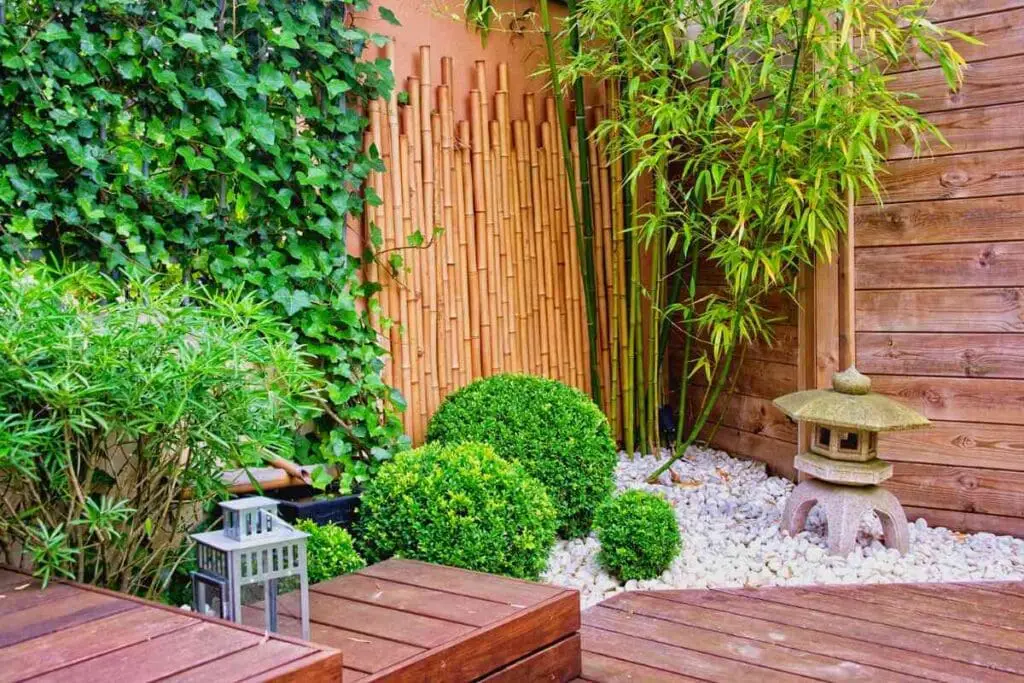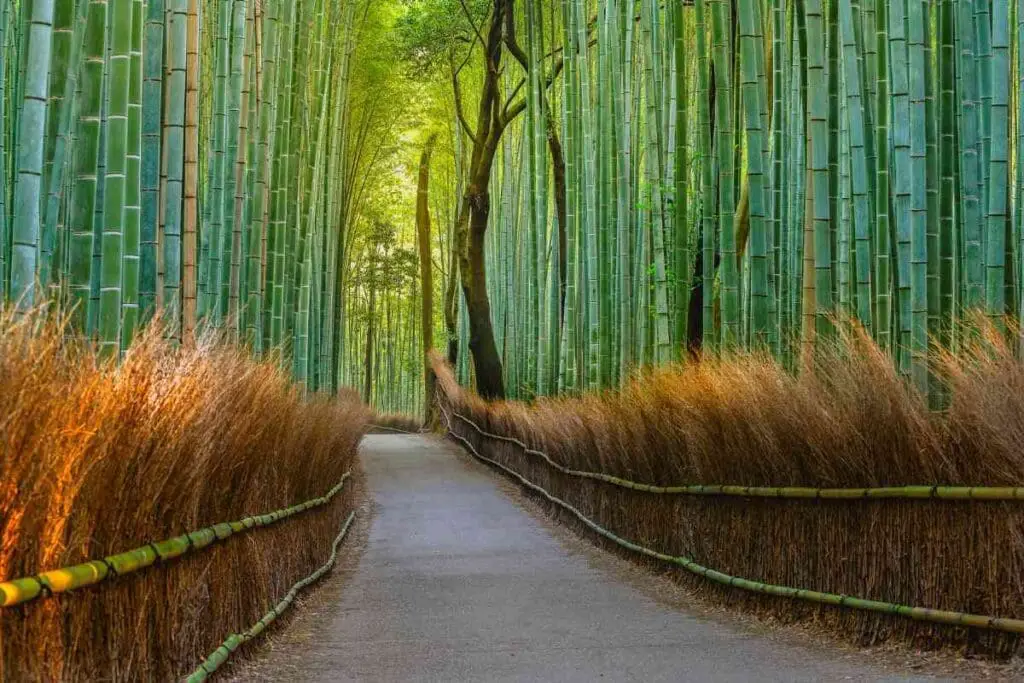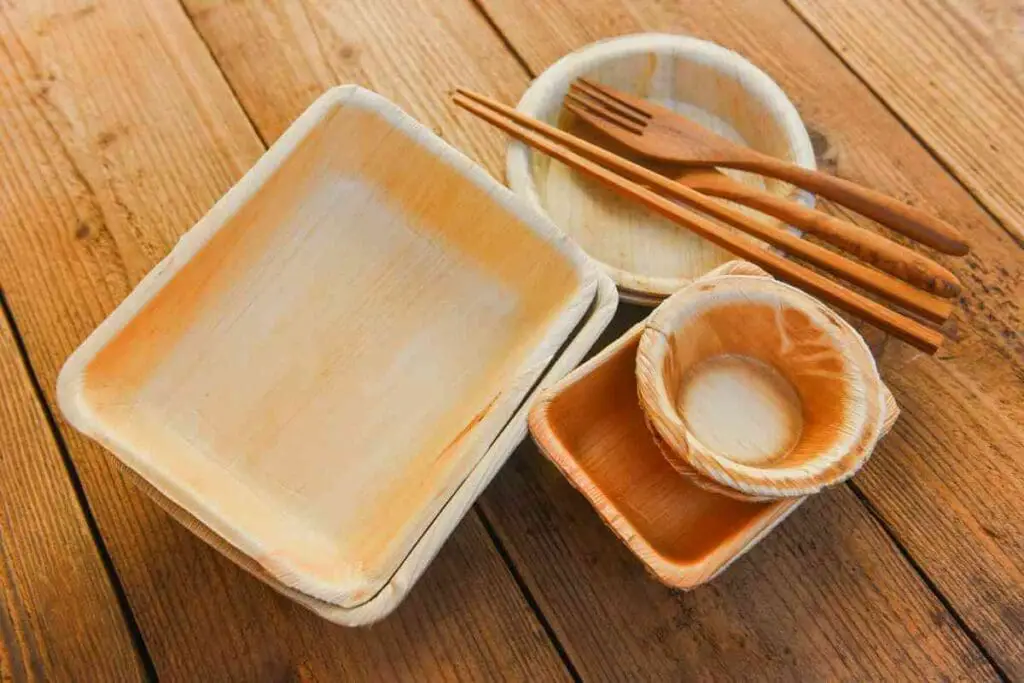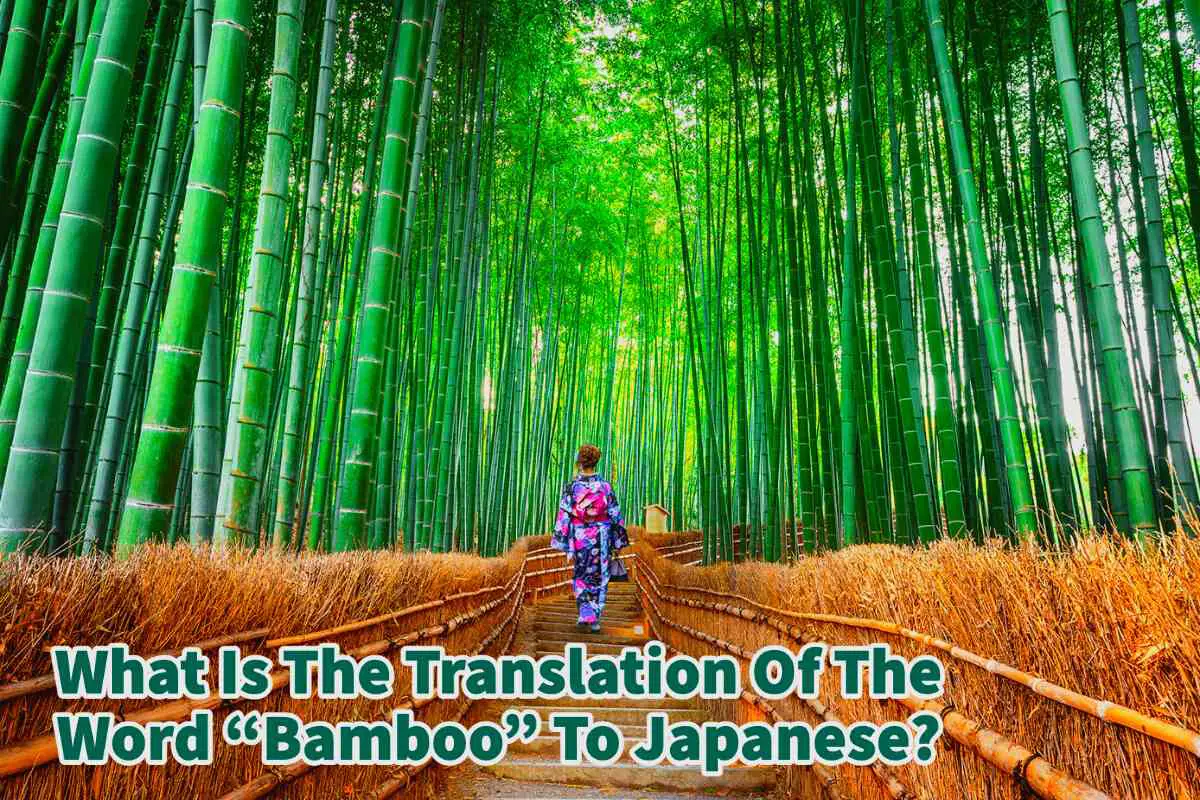Are you intrigued by the beauty of bamboo and its symbolism? Do you want to learn how to express your admiration for this plant in Japanese? Look no further! This blog post will answer the burning question – what is the translation of “bamboo” into Japanese?
The word for Bamboo in Japanese is 竹 (たけ), which is read as ‘Take.’ But more than just how the word sounds, bamboo symbolizes many things throughout Asia, such as resilience, spiritual utility, grace, and prosperity. It was also a sustainable material that is still used a lot today.
Table of Contents
- The Word For Bamboo In Japanese Is “Take”
- Bamboo Is Important In Japan And Throughout Asia
- Bamboo Is An Sustainable Material Used Today
- Bamboo Is An Important Symbol Throughout Asia
- Frequently Asked Questions
- Related Content
The Word For Bamboo In Japanese Is “Take”
The word for Bamboo in Japanese is 竹 (たけ), which is read as ‘Take.’ For the Japanese, bamboo continues to be a significant symbol in Japanese culture.
The word “take” symbolizes strength and resilience in Japanese culture, as bamboo is known for its ability to bend but not break. The significance of bamboo in Japan cannot be overstated, and the word “take” to refer to bamboo is just one small example. It serves as a reminder that bamboo has been an integral part of the culture for centuries and is still highly valued today.
Bamboo in Japan is an integral part of the culture and has been used for centuries in traditional architecture, artwork, poetry, and literature. The word “take” refers to how important bamboo is and why it is essential.
Bamboo Is Important In Japan And Throughout Asia
Bamboo has many meanings in different parts of Asia. It is an essential symbol in countries like Japan and China. And many of these places also have some significant spiritual and other meanings.
Here are some of the top ways that bamboo is seen throughout Asia:
Bamboo Has A Spiritual Meaning
Bamboo also has a strong spiritual meaning in Japan and Asia; some believe it can ward off evil spirits, but it can also symbolize many good things.
In Japan, bamboo is seen as a symbol of elegance and grace. It is used to create beautiful gardens, and its delicate leaves are often the focus of traditional artwork.

That is why Bamboo can be a crucial design element in a Japanese or Zen Garden. Bamboo can be a plant that helps give these Japanese gardens a kind of serenity and peace.
Bamboo Symbolizes Strength And Resilience
Bamboo has been an essential symbol in Asia for centuries. To Asians, it symbolizes strength and resilience due to its ability to grow back quickly after being cut down.
Bamboo is solid and will grow back quickly, which means it is an ideal plant. It is known for its strength, flexibility, and rapid growth—all traits valued by Asian people.

Bamboo can be seen as a symbol of strength and resilience in Japan and worldwide. It is an emblem of hope and determination to overcome difficult times, and its presence is often associated with peace and prosperity. In this way, bamboo is more than just a plant – it is an integral part of Japanese culture, and the word “take” refers to bamboo’s further emphasis and importance.
In China, bamboo is also a symbol of friendship and loyalty and has been celebrated in many poems, stories, and paintings. Bamboo’s representation of hope and harmony resonates strongly with Asian cultures.
Bamboo Symbolizes Luck And Good Fortune
Bamboo also represents luck and good fortune, making it a popular decoration and gift-giving choice. Bamboo is even said to bring good health and serenity.
In Japan, there can even be bamboo-shaped treats that help to show the good luck of the bamboo.
Bamboo Symbolizes Prosperity
Bamboo is a powerful plant. Because it has a sturdy root structure, it symbolizes prosperity in Japan and Asia. For many years, people were told that if there was an earthquake or other natural disaster, they should run into a bamboo field because the bamboo would be so strong that it would not bend or fall.
Bamboo Is An Sustainable Material Used Today

Bamboo is still highly utilized today in Japan and Asia because of its sustainable properties. Bamboo products are popular in many parts of Asia for products such as paper, textiles, musical instruments, food utensils, and more.
Bamboo furniture has become increasingly popular due to its lightweight yet strong and durable nature. Bamboo flooring is also desirable for its eco-friendly properties and ability to cope with moisture.
Bamboo can even be used as construction material, such as scaffolding, bridges, and houses. It can be widespread in many parts of Asia to see that even high-rise buildings still use some bamboo scaffolding. Bamboo may be the scaffolding of choice because of the natural strength and flexibility that bamboo offers.
Bamboo Is An Important Symbol Throughout Asia
Bamboo continues to be an important symbol in Asia today for all the reasons mentioned above. It is truly a versatile and sustainable resource with many uses. Bamboo is here to stay, and its symbolism will continue to be treasured for years.
Bamboo is a significant symbol throughout Asia and has been for centuries. It has deep cultural significance to the people of many Asian countries, and its prevalence in the region’s environment makes it a powerful icon in art, literature, and everyday life.
In India, bamboo has always been an essential part of daily life, from construction materials to musical instruments. It is also seen as a representation of strength, perseverance, and resilience — qualities cherished by the Indian people.
Bamboo can be found throughout Southeast Asia, where it has been used to build houses and furniture for centuries. Traditional medicine has even used bamboo in Vietnam to treat diarrhea and malaria.
Bamboo represents resilience in China and Asia and spiritual power in Japan; bamboo continues to be celebrated as a representation of hope, harmony, and strength. Bamboo is prevalent in the region’s environment, making bamboo an essential part of Asian culture that will remain for years.
Frequently Asked Questions
What is bamboo, and where does it come from?
Bamboo is a fast-growing, woody plant that belongs to the grass family. It is native to various parts of the world, including Asia, Africa, and the Americas.
How fast does bamboo grow?
Bamboo is known for its rapid growth. Some species can grow up to 3 feet (1 meter) or more in a single day under ideal conditions.
Is bamboo a sustainable resource?
Yes, bamboo is considered highly sustainable. It matures quickly, requires minimal water and pesticides, and regenerates from its roots after harvesting.
What are the uses of bamboo?
Bamboo has a wide range of uses, including construction materials, furniture, flooring, paper, textiles, and even as a food source in some cultures.
Is bamboo stronger than wood?
Yes, bamboo is known for its exceptional strength-to-weight ratio. It can be stronger than many hardwoods while being lighter.
Can bamboo be used for building construction?
Yes, bamboo is commonly used in construction for scaffolding, flooring, walls, and even as a structural element in some building designs.
Is bamboo eco-friendly?
Bamboo is considered eco-friendly due to its rapid growth, low environmental impact, and ability to sequester atmospheric carbon dioxide.
Find out more about how Mondoro can help you create, develop, and manufacture excellent home decor and furniture products – don’t hesitate to contact me, Anita. Check out my email by clicking here or become a part of our community and join our newsletter by clicking here.
Mondoro gives out a FREE Lookbook to anyone interested. You can receive a copy of our latest Lookbook by clicking here.
Listen to our Podcast called Global Trade Gal. You can find it on all major podcast platforms. Try out listening to one of our podcasts by clicking here.
Subscribe to our Mondoro Company Limited YouTube Channel with great videos and information by clicking here.
Related Content
What Is Stronger Rattan Or Bamboo?
Bamboo is more robust than rattan. Some bamboo is known even to have a higher tensile strength than steel; this is why bamboo is used as scaffolding in construction in many parts of Asia. Rattan is a vine that grows in the jungles; when rattan is manufactured into furniture, it can be solid.
You can learn more by reading our blog, What Is Stronger Rattan Or Bamboo? by clicking here.
How Do You Make A Bamboo Lamp Shade? All About Bamboo Lampshades
To manufacture or make bamboo lampshades, you need to 1) properly prepare the bamboo materials, 2) build a metal frame, 3) wrap the metal frame, 4) secure the bamboo onto the metal frame, 5) spray color on top of the bamboo shade if you desire the lampshade to be a color other than natural and 6) spray a top coat on the entire shade to protect the bamboo shade’s finish.
You can read our blog about How Do You Make A Bamboo Lamp Shade? All About Bamboo Lampshades by clicking here.
Rattan Vs. Bamboo – The Differences Between The Materials Explained
Rattan and bamboo are not the same material, as they have different characteristics and uses. For example, bamboo is hollow and grows straight as a tree would. Rattan is a solid material easily bent and grows in rainforests as a vine.
You can learn more by reading our blog, Rattan Vs. Bamboo – The Differences Between the Materials Explained, by clicking here.


